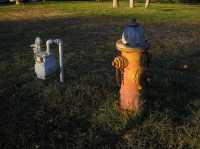
06 Feb Skin Care Products Make Cotton Fabrics More Flammable
MedicalResearch.com Interview with:
Dr Sarah Hall PhD
Senior Lecturer in Forensic Science
Anglia Ruskin University
MedicalResearch.com: What is the background for this study?
Response: We initially started the study in collaboration with Essex Fire and Rescue Services, as we were already doing some research on the recovery of evidence from fire scenes. During a visit to their cold fire scene facility, they described a tragic fatality with extensive fire damage, which didn’t link with the main fuel in the room. Therefore they questioned if a skin cream, regularly used by the victim, could have contributed as a fuel or ignited to initiate the fire and asked if we would do some initial research. Now we are also working with West Yorkshire and Cambridgeshire Fire and Rescue Service, the London Fire Brigade, St Andrews Centre for Plastic Surgery and Burns and the National Fire Chiefs Council.
We initially started the study in collaboration with Essex Fire and Rescue Services, as we were already doing some research on the recovery of evidence from fire scenes. During a visit to their cold fire scene facility, they described a tragic fatality with extensive fire damage, which didn’t link with the main fuel in the room. Therefore they questioned if a skin cream, regularly used by the victim, could have contributed as a fuel or ignited to initiate the fire and asked if we would do some initial research. Now we are also working with West Yorkshire and Cambridgeshire Fire and Rescue Service, the London Fire Brigade, St Andrews Centre for Plastic Surgery and Burns and the National Fire Chiefs Council.
MedicalResearch.com: What are the main findings?
Response: Our tests show that the ignition time is significantly reduced when 100% cotton (180, 200 and 400 thread count) or 52%/48% polyester/cotton mix sheeting is contaminated initially for 24hrs with various skin care products. Our flammability tests are based on a standard method for vertical burns, using a non-direct flame (7cm away from bottom of fabric strip). Our initial research is published in the Fire Safety Journal and with our recent results, they are showing significant reduction in ignition time compared to the blank fabric, but there is no significant difference in the quicker ignition times of products, even with different paraffin content or non- paraffin products. We have also found no difference in the quicker ignition time when leaving the same amount of contamination (approximately ¼ teaspoon) for 24hrs, 48hrs or 7 days.
We have also measured the flame time (how long, once ignited the flame is present), glowing/smouldering combustion time and vertical flame spread/speed. Our results show the smouldering combustion time particularly on the polyester/cotton sheeting was significantly longer, which does indicate the possibility of severe burns as the contaminated fabric continues to burn without a flame. The flame times of the textiles compared to when they are contaminated show no significant difference indicating a more intense burn despite the additional fuel of the contaminant. Our initial measurements of vertical flame spread carried out using slow motion video software, show that the flame spread is doubled, if not more, when the fabric is contaminated.
MedicalResearch.com: What should readers take away from your report?
Response: There is a significant fire risk when skin care products are left to dry on cotton based fabrics owing to significantly shorter ignition times. These are approximately 50-60 seconds (with 100% cotton fabric) quicker even with low paraffin content or non-paraffin based products. Our results also show the flame speed/spread is much quicker when the fabrics are contaminated.
Our intension is not to put people off using skin care products, but to encourage them to be used safely, by highlighting the potential fire risk. Therefore we advise consumers to change their clothes regularly and wash their clothes often at higher temperatures and if using such products keep away from cigarettes and naked flames and other ignition sources.
MedicalResearch.com: What recommendations do you have for future research as a result of this work?
Response: We are continuing with our research and investigating the removal of such contaminates to recommend the best washing method to reduce the fire risk. In the future we wish to identify the compounds, which are facilitating the quicker ignition times when fabrics are contaminated using head space extraction and Gas-Chromatography-Mass Spectrometry.
Citation:
The flammability of textiles when contaminated with paraffin base products
S.HallaL.FranklinbJ.BullbA.BeardbG.PhillipsbJ.Morrisseya
Fire Safety Journal
Volume 104, March 2019, Pages 109-116
[wysija_form id=”3″]
[last-modified]
The information on MedicalResearch.com is provided for educational purposes only, and is in no way intended to diagnose, cure, or treat any medical or other condition. Always seek the advice of your physician or other qualified health and ask your doctor any questions you may have regarding a medical condition. In addition to all other limitations and disclaimers in this agreement, service provider and its third party providers disclaim any liability or loss in connection with the content provided on this website.
Last Updated on February 6, 2019 by Marie Benz MD FAAD

